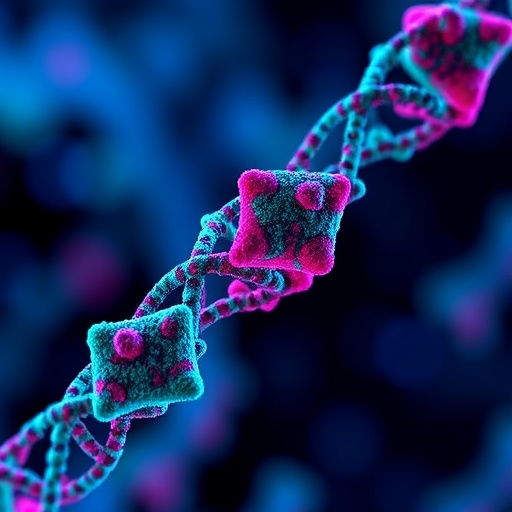Researchers at Vanderbilt University Medical Center have mapped the conformational changes that occur in a protein "notorious" for pumping chemotherapeutic drugs out of cancer cells and blocking medications from reaching the central nervous system.
Their report, published today as a letter in the journal Nature, is an important step forward in understanding — and perhaps one day interfering with – the highly dynamic ABC transporter known as P-glycoprotein, said corresponding author Hassane Mchaourab, Ph.D.
A national leader in the study of protein "dynamics," Mchaourab is the Louise B. McGavock Professor in the Department of Molecular Physiology and Biophysics in the Vanderbilt University School of Medicine.
P-glycoprotein is an ATP-binding cassette (ABC) transporter. ABC transporters make up the largest family of transporter proteins and are present in all organisms. They use ATP hydrolysis — the release of chemical energy stored in ATP molecules — to traffic a wide variety of molecules across cell membranes.
P-glycoprotein is an ABC transporter of the efflux class that functions to remove molecules from inside the cell, including cytotoxic drugs. In this way it controls the body's pharmacokinetic profile. P-glycoprotein is active in many tissues including the intestine, liver, kidney, placenta and the blood-brain barrier.
P-glycoprotein consists of different components, called domains. Using an electron paramagnetic resonance spectroscopy method called double electron-electron resonance (DEER), the researchers mapped the "shape changes" that allow P-glycoprotein to bind a wide variety of drug-like compounds, move them across the cell membrane and then eject them from the cell.
In particular, the researchers were able to determine how P-glycoprotein's ATP "motor" drives a change in the conformation or spatial orientation of its membrane domain — the portion of the protein that binds and transports molecules. This conformation change is called "alternating access."
In collaboration with Emad Tajkhorshid, Ph.D., a computational biologist at the University of Illinois at Urbana-Champaign, the researchers generated a model of the specific P-glycoprotein structure that ejects target drugs from the cell.
A culmination of 15 years of effort to understand the mechanistic principles of ABC transporters, their study showed that human P-glycoprotein is structurally and functionally distinct from the well-studied bacterial ABC transporters.
The researchers also discovered an intermediate, "occluded" conformation that occurs after P-glycoprotein binds the target drug but before the drug is ejected from the cell.
This is a key discovery. The intermediate conformation might be the point at which researchers could intervene and prevent P-glycoprotein from pumping chemotherapeutic drugs out of tumor cells before they have had a chance to do their job.
"Now the question is," said Mchaourab, "can we make molecules that exclusively stabilize the occluded confirmation and put the transporter out of commission for a while?"
To that end, the Mchaourab lab is creating a transgenic model of the human P-glycoprotein gene inserted into zebrafish to better understand how the transporter binds different compounds. That information may lead to new ways to block its action.
###
The study's co-first authors were Brandy Verhalen, Ph.D., now at the University of Texas Southwestern Medical Center in Dallas, and Vanderbilt postdoctoral fellow Reza Dastvan, Ph.D. In addition to the Tajkhorshid lab, the Vanderbilt team collaborated with Robert Nakamoto, Ph.D., and colleagues at the University of Virginia.
The three teams are part of the membrane protein structural dynamics consortium supported by the National Institute of General Medical Sciences (grant number GM087519). The research was also supported by grant GM104601.
Media Contact
Bill Snyder
[email protected]
615-322-4747
http://www.mc.vanderbilt.edu/npa
############
Story Source: Materials provided by Scienmag




